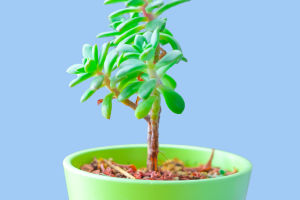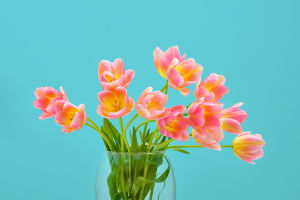Gypsophila paniculata, also known as Baby's Breath, is a stunning perennial herbaceous plant that belongs to the Caryophyllaceae family. Gypsophila plants typically reach a height of 60-120 cm and feature upright stems with numerous branches.
They are characterized by their slender, linear leaves that display a pale green color. The flowering period of Gypsophila occurs predominantly during the summer months.
The flowers themselves are small, measuring approximately 1-2 mm in diameter, and come in shades of white or light pink. With their delicate and star-like appearance, they have earned the endearing name of Baby's Breath. These charming flowers cluster together in large, loosely arranged inflorescences, forming elongated cone-shaped spikes that can reach lengths of 30-60 cm.
Renowned for its ornamental value, Gypsophila is widely utilized in garden design, floral arrangements, and bouquet decorations. The light and delicate nature of its flowers evokes a sense of romance and softness. It is often employed to complement other flowers or as an independent decorative element. Within bouquets, Baby's Breath serves as a popular filler material, adding layers and an airy quality to the arrangement.
Cultivating Gypsophila is relatively straightforward, as it thrives in sunny environments and exhibits strong resilience to cold temperatures. It adapts well to various soil types, although it necessitates adequate drainage and is not tolerant of waterlogging. Gypsophila can be propagated through two primary methods: seed propagation and division.
In addition to its aesthetic appeal and versatility, Gypsophila offers several other noteworthy features and applications:
Nectar Source: Gypsophila flowers attract bees and other pollinators, serving as a valuable source of nectar and pollen within garden ecosystems.
Dried Flower Material: Thanks to its excellent drying properties, Gypsophila is commonly employed in creating dried flower decorations, wreaths, and bouquets. Even after drying, the delicate star-shaped form of the flowers remains intact, imparting a unique visual effect.
Complementary Floral Arrangements: The white or pale pink hues of Gypsophila flowers provide an ideal contrast to other floral elements, enhancing depth and visual interest in bouquets and flower beds.
Garden Borders and Shrub Ornamentation: With its tall, branching structure, Gypsophila can be used to delineate garden borders or contribute to diverse and captivating landscapes when combined with other shrubs and plants.
Culinary and Medicinal Applications: Gypsophila roots are occasionally utilized in herbal preparations, believed to possess certain medicinal properties. Additionally, Gypsophila can serve as an edible decorative plant, adorning cakes, desserts, and beverages.
All in all, Gypsophila is a captivating flower with a wide range of uses and ornamental value. Its pristine beauty, resilience, and versatility have made it a beloved choice for gardens, floral markets, and interior decor. Whether presented as a standalone bouquet or paired with other flowers, Gypsophila adds a touch of romance and feminine allure to any occasion.
Gypsophila flowers convey a rich language of flowers, often symbolizing the following meanings and emotions:
Purity and Love: The white or pale pink color of Gypsophila flowers symbolizes purity, freshness, and innocent love.
Hope and Blessings: Gypsophila's flower language encompasses hope and well wishes for the future, representing optimism for positive outcomes and happiness.
Friendship and Unity: Gypsophila's flower language also encompasses friendship and unity, signifying the bonds between friends and the cohesion of teams or communities.
Mystery and Charm: Gypsophila's flower language can also be associated with mystery and enchantment, as its unique shape and elegant appearance often captivate individuals.
Eternal Love and Family: On occasion, Gypsophila is attributed to the symbolism of family and eternal love, representing the warmth, stability, and enduring affection within familial relationships.
The language of flowers is a cultural symbol and tradition that can vary across regions and personal interpretations. Therefore, the flower language of Gypsophila may differ depending on different cultures and individual backgrounds. However, in general, Gypsophila's flower language predominantly relates to beautiful emotions and values such as love, purity, hope, and friendship.


